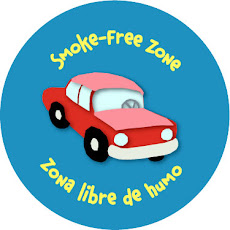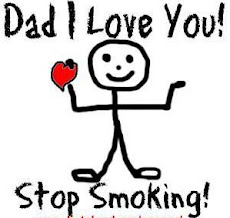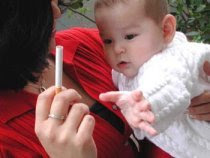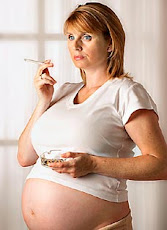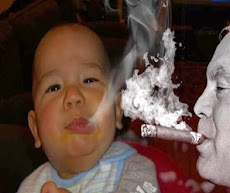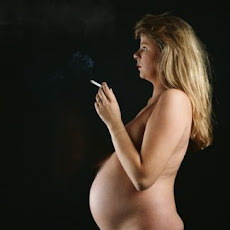


DR WIDODO JUDARWANTO
Working together make a smoke-free homes and smoke-free zones for all children
Yudhasmara Foundation
JL TAMAN BENDUNGAN ASAHAN 5 JAKARTA PUSAT, JAKARTA INDONESIA 10210
PHONE : (021) 70081995 – 5703646
email : cfc2006@hotmail.com, judarwanto@gmail.com
www.savechildfromsmokers.blogspot.com/
Second-hand smoke (which is sometimes called environmental tobacco smoke or ETS) contains toxic substances, over 40 of which cause cancer. Some of these substances are in stronger concentrations in second-hand smoke than they are in the smoke that goes directly into smokers’ lungs.
ETS is causally linked with a number of adverse health effects in children (under 18), including:
- lower respiratory tract infections (i.e. croup, bronchitis and pneumonia)
- increased fluid in the middle ear
- upper respiratory tract irritation
- reduced lung function
- additional episodes of asthma
- increased severity of asthmatic symptoms in children
- reduced oxygen flow to tissues, comparable to children with anemia, cyanotic heart disease or chronic lung disease †
ETS is also associated with:
- Sudden Infant Death Syndrome (SIDS)
- acute middle ear infections (otitis media)
- tonsillectomy
- meningococcal infections
- cancers and leukemias in childhood
- slower growth
- adverse neurobehavioural effects
- upper respiratory tract infections (colds and sore throats)
- unfavorable cholesterol levels and initiation of atherosclerosis (heart disease) †
- A British study found that SIDS deaths could be reduced by two-thirds if parents did not smoke.***
A U.S. analysis** of over 100 reports on pædiatric diseases concluded that children’s exposure to tobacco smoke is responsible for up to:
- 13% of ear infection(approximately 220,000 ear infections in Canadian children)*
- 26% of tympanostomy tube insertions(approximately 16,500 in Canada)
- 24% of tonsillectomies and adenoidectomies(approx. 2,100 Canadian operations)
- 13% of asthma cases(approx. 52,200 cases in Canada)
- 16% of physician visits for cough(approx. 200,000 visits in Canada)
- 20% of all lung infections in children under 5(approx. 43,600 cases of bronchitis in Canada
- and 19,000 cases of pneumonia in Canada)
- 136-212 childhood deaths from lower respiratory infection(approx. 13-20 in Canada)
- 148 childhood deaths from fires started by tobacco products(approx. 15 in Canada)
- 1868-2708 SIDS deaths‡(approx. 180-270 in Canada)
* the number of Canadian cases is extrapolated from U.S. estimates† [Samet, JM. Synthesis: The Health Effects of Tobacco Smoke Exposure on Children. January 7, 1999]‡[California EPA. Final Report: Health Effects of Exposure to Environmental Tobacco Smoke, Sept. 1997]** Joseph diFranza and Robert Lew, Morbidity and Mortality in Children Associated with the Use of Tobacco Products by Other People, Paediatrics, 1996, 97:560-568].*** Peter Blair et al. Smoking and the sudden infant death syndrome: results from 1993-5 case-control study for confidential inquiry into stillbirths and deaths in infancy. British Medical Journal, 1996: 313.
Adult knowledge about impact on kids' health
Canadians overwhelmingly believe that cigarette smoke is harmful to the non-smoker. Only 9% think there is no danger to the non-smoker.
Canadians are most likely to identify lung cancer and bronchitis and other respiratory problems as diseases associated with second-hand smoke. Smokers and those who live with smokers are less likely to acknowledge the health effects of smoking.[Survey on Smoking in Canada, 1994-95, Cycle 2, Statistics Canada]
… but don’t know of the direct impact on children’s health …
Only 1 in 5 Canadians surveyed believed that second-hand smoke could cause ear infections. Even among those who know that second-hand smoke poses a danger, many mistakenly believe that children’s health is only harmed by smoking directly around them.[Environmental Tobacco Smoke: Knowledge, Attitudes and Actions of Parents, Children and Child Care Providers, Health Canada, 1995].
Number of kids exposed to cigarette smoke in their homes
Almost half of all Canadian children under the age of 15, some 2.8 million children, are exposed to second-hand smoke on a regular basis.[Parliamentary Secretary to the Minister of Health on second reading debate of Bill C-24, June 6, 1996].
Four in 10 Canadian households include someone who regularly smokes in the home. Neither the presence of children nor their age affects whether or not homes are kept smoke-free.
A further 40% of Canadian homes have no regular smoker living there, but permit visitors to smoke in their home. Only 19% of Canadian homes are smoke-free.[Survey on Smoking in Canada 1994-95, Cycle 2]
In smoker’s homes, an average of 18 cigarettes a day are smoked. In only 1 in 5 of these households are cigarettes not smoked directly in front of children.
Smokers are more likely to have mainly smokers in their social circle, and their children are more likely to be in contact with these smoking friends and relatives than are the children of non-smokers.[An Assessment of Knowledge, Attitudes and Practices Concerning Environmental Tobacco Smoke, 1995 – Ekos Research Associates]
Impact of mothers' smoking on the fetus
Maternal smoking can affect the fetus and the outcome of the pregnancy. Smoking deprives the fetus of needed oxygen and other nutrients.
This may result in:
- deficits in intellectual ability and behavioral problems
- low birth weight or intra-uterine growth retardation
- spontaneous abortion (miscarriage)
- stillbirth
- reduced lung function in the baby
- complications in pregnancy
- Exposure to someone else’s smoking can harm an expectant mother’s baby. Research into this area is still incomplete, and the full effects are still unknown. What we do know is that the best chance for a healthy baby and healthy mother is a pregnancy where both are not exposed to any tobacco smoke.[Environmental Tobacco Smoke (ETS) in Home Environments, Health Canada, 1996].
Why kids are especially vulnerable
Young children are especially vulnerable to second-hand smoke in the home because:
- they breathe more air relative to body weight (and for the same level of exposure will absorb more tobacco smoke toxins)
- they are less able to complain (either because they are too young, or because their complaints are ignored)
- their immune system is less protective
- they are less able to remove themselves from exposure
What's in second-hand smoke
Tobacco smoke contains more than 4,000 substances, of which more than 40 are known to cause cancer.
These carcinogens include:
arsenic. nickel, chromium, cadmium, lead, polonium-210, vinyl chloride, formaldehyde, benz(a)anthracene, benzo[b]fouoranthene, benzo[j]fluoranthene, benzo[k]fluoranthene, benzo[a]pyrene, chrysene, dibenz[a,h]anthracene, dibenzo[a,I]pyrene, dibenzo[a,l]pyrene, indeno [1,2,3-c,d]pyrene, 5-methylchrysene, quinoline, dibenz[a,h]acridine, dibenz[a,j]acridine, 7H-dibenzo[c,g]carbazole, N-nitrosodimethylamine, N-nitrosoethylmethylamine, N-nitrosodiethylamine, N-snitrosopyrrolidine, N-nitrosodimethylamine, N’-nitrosonornicotine, 4-(methylnitrosamino)-1-(3-pyridyl)-1-butanone, N’-nitrosoanabasine, N-nitrosomorpholine, 2-toluidine, 2-naphthylamine, 4-aminobiphenyl, acetaldehyde, crotonaldehyde, benzene, acrylonitrile, 1,1-dimethylhydrazine, 2-nitropropane, ethylcarbamate, hydrazine.
Even if smoking is restricted to a single room, the harmful constituents of cigarette smoke can be dispersed throughout the house. Many of these highly dangerous chemicals are in invisible gas form.
Setting an example
Many parents avoid doing things in front of their children which they don’t want the children to imitate – like swearing or jay-walking. If you smoke, it may be a good idea not to smoke in front of your children: children whose parents smoke are twice as likely to become regular smokers.
Support for bans on smoking around children
Canadians care about children, and want to protect them from harm. That’s why parents ensure their children wear seat-belts in the car, and why they listen carefully to public health warnings. For example, many parents were recently prompted to change their window coverings when it was learned that some imported blinds contained leaded plastics. (Tobacco smoke also contains significant amount of lead and other toxic chemicals).
But researchers have only recently established the seriousness of the harm caused to children by tobacco smoke. Many Canadian parents and caregivers are not yet aware of the variety of illnesses it causes. Some of them mistakenly think opening a window or smoking in another room will remove the risks.
Canadians spend 90% of their time indoors; when tobacco smoke is present, inddor air is highly polluted.
A large survey in 1995 showed that 60% of Ontarians thought that parents spending time with small children should not smoke at all inside the house, and another 33% said they should smoke only in another part of the house. Only 8% thought that these parents should feel free to smoke in front of their children.
But the same Ontarians think that families – not governments – should set the rules. Most did not support legislation to stop parents from smoking inside their homes when children are present (35.5% strongly or somewhat agreed; 63.5% strongly or somewhat disagreed). And they were divided on whether there should be laws against smoking inside cars when children are present (50.6% agreed; 48.4% disgreed).[Ontario Alcohol and Other Drug Opinion Survey, 1995]
An overwhelming majority of child-care workers surveyed (91%) strongly agreed that "There should be regulations regarding smoking around children that all child-care providers should follow"[Environmental Tobacco Smoke: Knowledge, Attitudes and Actions of Parents, Children and Child Care Providers, Health Canada, 1995]
How smokers' beliefs differ from non-smokers'
source : [Rickert WS, Walker R, Brown KS, Cameron R. Environmental tobacco smoke in the home: Attitudes, beliefs and actions of smokers and non-smokers.]
A survey by University of Waterloo researchers showed that smokers were much less likely than non-smokers to believe that:
- second-hand smoke hurts non-smokers (77% to 93%)
- second-hand smoke caused lung cancer in non-smokers (54% to 79%)
And that they were much more likely to believe that:
- air pollution is a greater health risk to non-smokers than second-hand smoke (51% to 35%)
- people are too concerned about the effect of other people’s smoking (63% vs. 33%)
- evidence of the dangers of second-hand smoke is exaggerated (46% vs. 32%)

